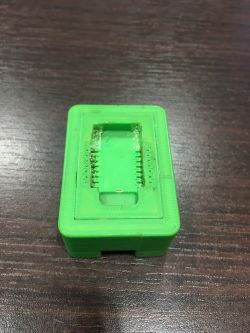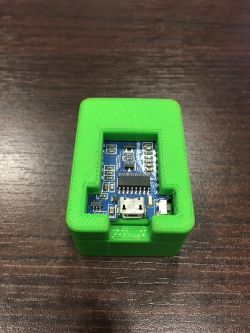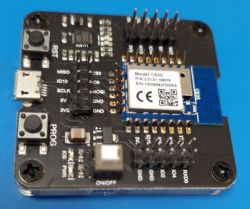
Hello, today I will briefly show you a useful board that is essentially a USB to UART converter, but is distinguished by the fact that you can place a module with ESP12-compatible pins without soldering.
We found the tile in China under the slogan: ESP8266 ESP-WROOM-32 ESP32-WROVER Development Board Test Burning Base Fixture Tool Downloader for ESP-12F ESP-07S ESP-12S . However, I didn't order it myself, my friend from Serbia, @DeDaMrAz, ordered it and I got the photos from him. I tested it with him remotely.
Below are screenshots of the offer:
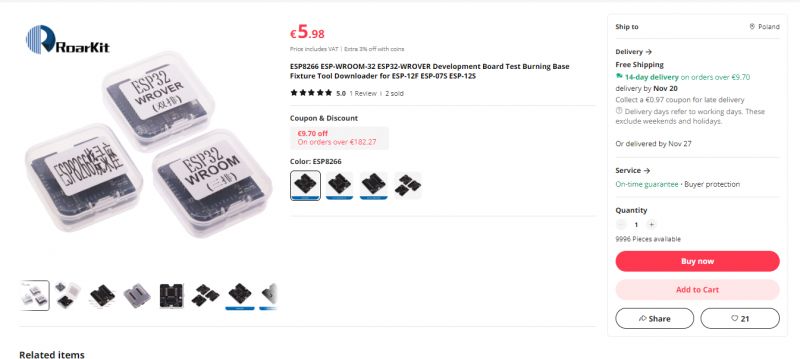
It may not be the cheapest board, it costs over €6, but what makes it unique is that instead of regular soldering pads, it has springs that allow you to quickly replace the module on board.
It is available in three versions: ESP8266, ESP-WROOM-32, SP32-WROVER:



Description from the seller:

The board board includes:
- RESET button
- GPIO0 button (to enter ESP into programming mode; unnecessary in the case of BK7231)
- USB to UART converter
I also saw a hybrid version on sale, with places for various modules. Perhaps this would be more economical, but my friend happened to take what was available.
What is compatible with this board?
First of all - ESP8266, just like in the name. That is, all modules like ESP12, TYWE3S, below the pinout:
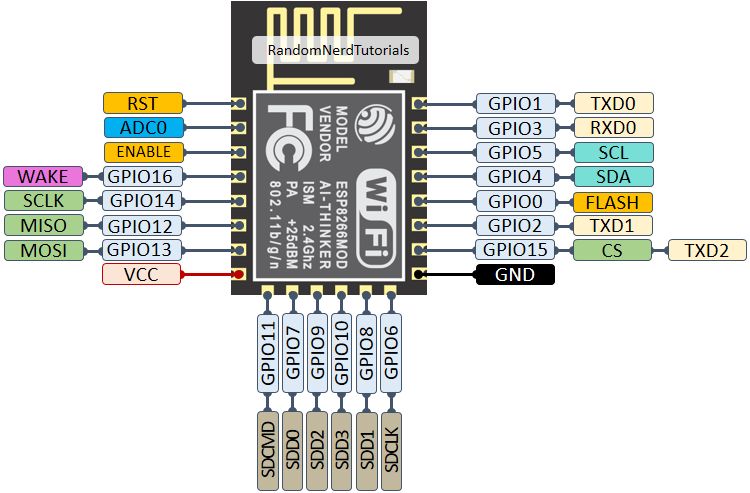

The most important pins here are power, ground, RESET and UART1 - RX and TX. The WB3S (BK7231T) are compatible with TYWE3S:
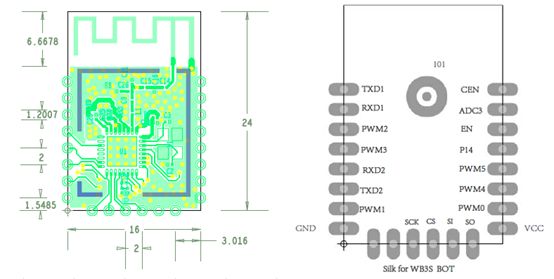
So WB3S fits too. Inevitably, CB3S and related ones are similar:

Over time, I also encountered modules based on other microcontrollers with similar pinouts. There was even something with the W600 or W800 from WinnerMicro, and the ground/power supply and UART positions were the same, so this board would be useful even for them.
Here are photos of the board in action - with the CB3S module:


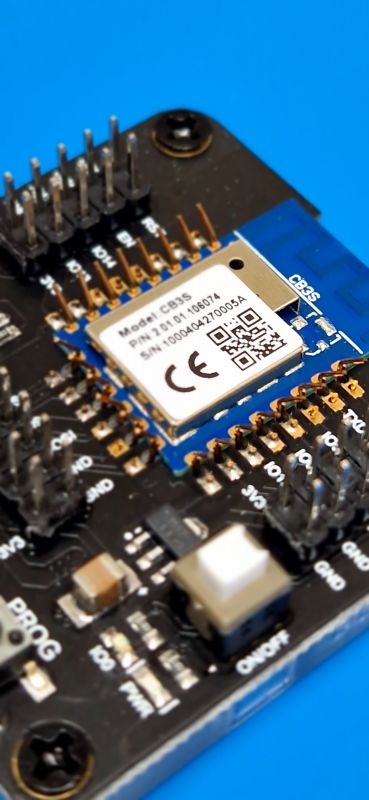

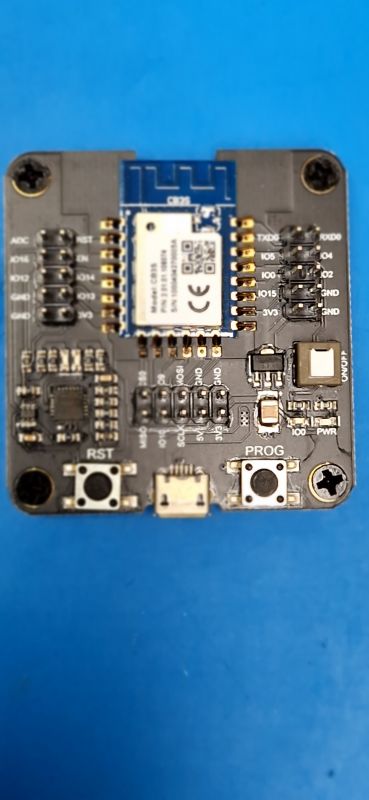
Together with @DeDaMrAz we checked and it is possible to flash and operate CB3S in this board without any problems. Here is an example of a photo after uploading the CB3S batch of the Tuya lamp whose communication protocol we will be examining:
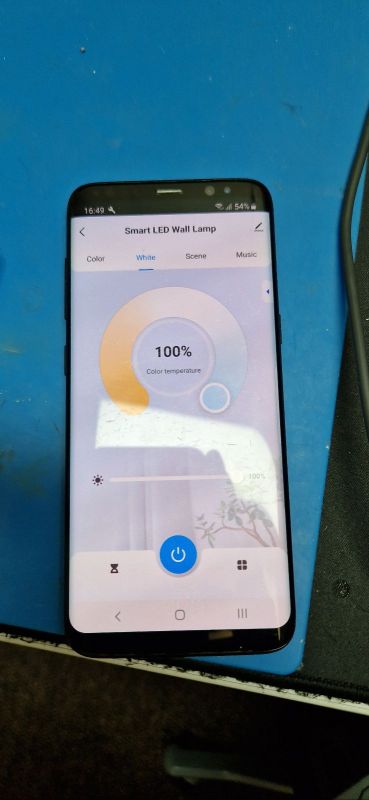
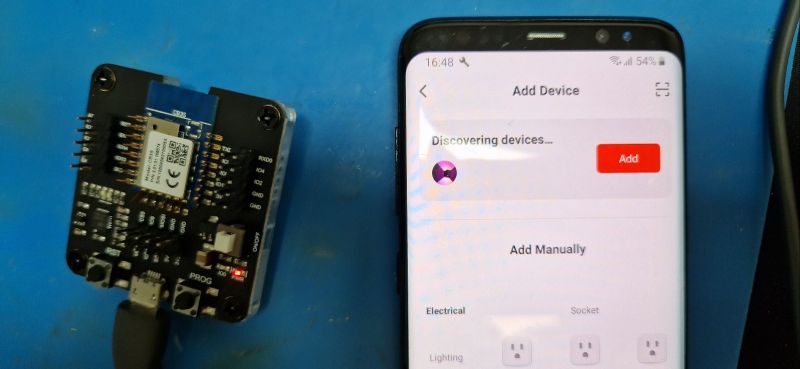
In this situation, the CB3S in the photo is new, and we have uploaded the user's input to it, but that is not important for this topic...
We uploaded with my flasher:
https://github.com/openshwprojects/BK7231GUIFlashTool
For ESP8266, you can look at:
- How to easily install Tasmota - online installer tasmota.github.io/install via a web browser
- SmartLife switch - test, interior and programming of a WiFi light switch
Summary
A convenient and useful board, although perhaps a version supporting different types of pins at the same time would be better. With ESP8266 (and esptool.py or any other programmer) it has been checked many times, with BK7231 I checked it with @DeDaMrAz and it also works. It's worth having at least one piece, at least if you don't like soldering. The outlet of this type of module may require hot air.
What can this plate be used for? I see, among others: such possibilities:
- if we are making a DIY device and do not want to program it in the system, it can be used to program the module before soldering it to the board (but I would rather not do that, it is always worth outputting the UART to the PCB)
- if we have one motherboard and several modules (say TYWE3S, CB3S, WB3S), we can easily replace them
- if, for example, we are flashing a smart device that has blocked UART lines (e.g. through TuyaMCU or something else that makes flashing difficult), it may be more convenient to desolder the entire module, program it in this board and solder it into place, although in such a situation you can also just temporarily cut the UART paths...
Do you see any practical use for this type of tiles? I invite you to discuss.
Cool? Ranking DIY Helpful post? Buy me a coffee.








